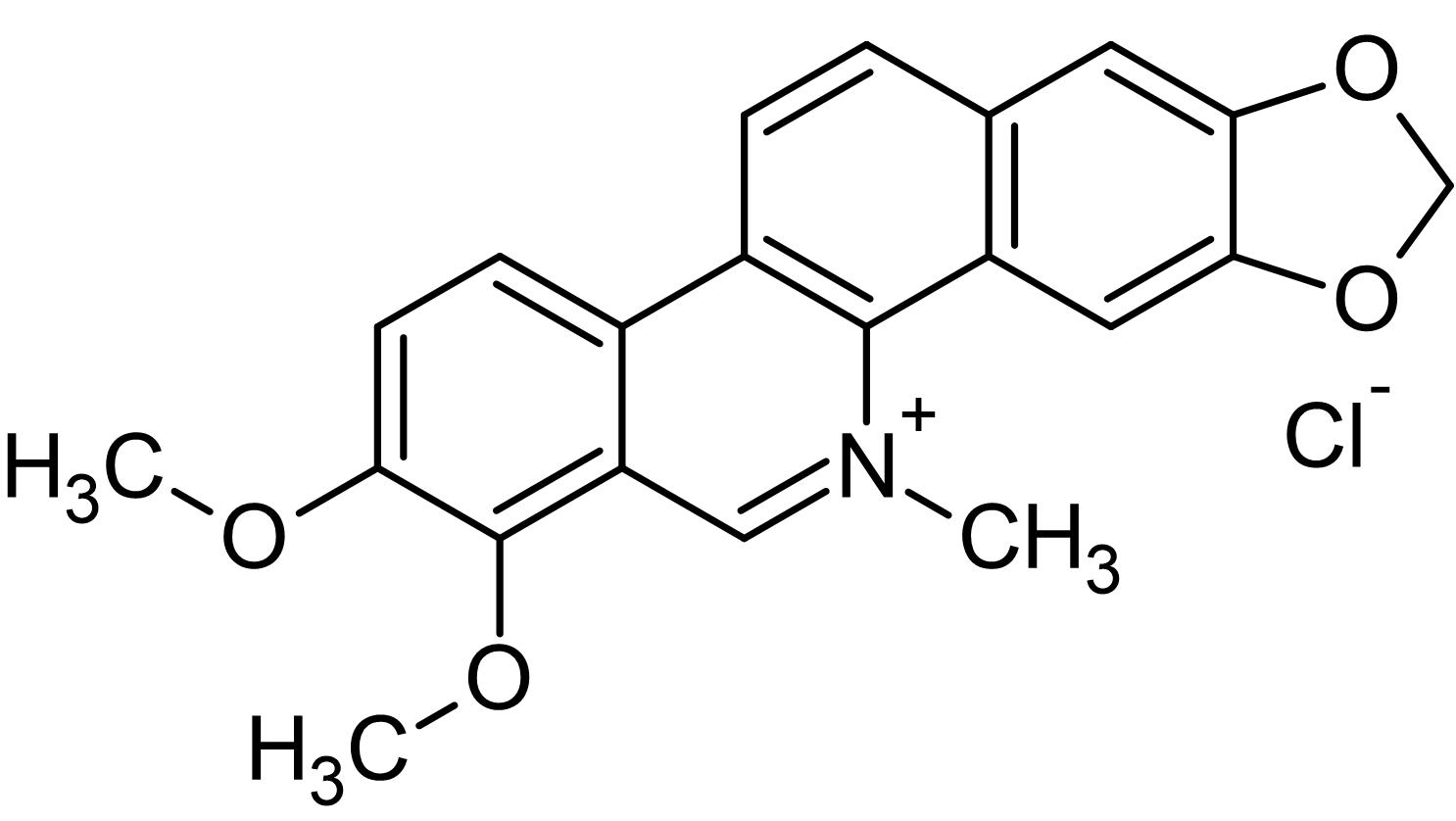
Chelerythrine is a natural compound found in plants like the bloodroot. Known for its bright yellow color, this alkaloid has intrigued scientists for years. But what makes it so special? Chelerythrine is famous for its potential medicinal properties, including anti-cancer, anti-inflammatory, and antimicrobial effects. Researchers are diving deep into its chemical structure to unlock its secrets. Imagine a tiny molecule with the power to fight diseases and heal wounds. Sounds like something out of a science fiction novel, right? But it's real and growing in popularity. Ready to learn more? Let's uncover 40 fascinating facts about Chelerythrine that will blow your mind!
Key Takeaways:
- Chelerythrine, a yellow compound from plants, fights bacteria, inhibits cancer growth, and may treat neurodegenerative diseases. It's used in medicine, agriculture, and biotechnology, with potential for future therapies.
- Chelerythrine, found in bloodroot and Mexican prickly poppy, has a rich history in traditional medicine and modern research. While it shows promise in various fields, its safety and potential for new applications are still being explored.
What is Chelerythrine?
Chelerythrine is a natural compound found in certain plants. It has drawn interest due to its potential medicinal properties. Here are some fascinating facts about this intriguing substance.
-
Chelerythrine is an alkaloid extracted from plants like the bloodroot and the Mexican prickly poppy.
-
It has a bright yellow color, making it easy to identify in its natural form.
-
This compound is known for its antimicrobial properties, which help fight bacteria and fungi.
-
Chelerythrine has been studied for its anti-cancer effects, showing promise in inhibiting tumor growth.
-
It works by blocking protein kinase C (PKC), an enzyme involved in cell growth and survival.
Historical Uses of Chelerythrine
Chelerythrine has been used in traditional medicine for centuries. Let's explore some historical applications.
-
Native Americans used bloodroot, which contains chelerythrine, for treating skin conditions and as a dye.
-
In traditional Chinese medicine, chelerythrine-containing plants were used for reducing inflammation.
-
Ancient healers applied bloodroot paste to remove warts and other skin growths.
-
The compound was also used as a natural insect repellent.
-
Chelerythrine has been utilized in folk remedies for its pain-relieving properties.
Modern Research on Chelerythrine
Scientific studies have uncovered various potential benefits of chelerythrine. Here are some key findings.
-
Research indicates that chelerythrine can induce apoptosis (programmed cell death) in cancer cells.
-
It has shown effectiveness against leukemia and other blood cancers in laboratory studies.
-
Chelerythrine may help reduce inflammation by inhibiting certain signaling pathways.
-
Studies suggest it could be beneficial in treating neurodegenerative diseases like Alzheimer's.
-
The compound has been found to enhance the effectiveness of certain chemotherapy drugs.
Chelerythrine in Pharmacology
Chelerythrine's unique properties make it a subject of interest in pharmacology. Let's delve into its pharmacological aspects.
-
Chelerythrine is a potent inhibitor of protein kinase C, which plays a role in many cellular processes.
-
It has been studied for its potential to treat cardiovascular diseases by affecting heart muscle cells.
-
The compound can cross the blood-brain barrier, making it a candidate for neurological treatments.
-
Chelerythrine has antioxidant properties, helping to neutralize harmful free radicals.
-
It may also have antiviral effects, showing activity against certain viruses in preliminary studies.
Safety and Toxicity of Chelerythrine
Understanding the safety and toxicity of chelerythrine is crucial for its potential therapeutic use. Here are some important points.
-
High doses of chelerythrine can be toxic, causing cell damage and death.
-
It can cause skin irritation when applied topically in concentrated forms.
-
Ingesting large amounts of chelerythrine-containing plants can lead to gastrointestinal distress.
-
Long-term exposure to chelerythrine may have carcinogenic effects, though more research is needed.
-
Proper dosing and administration are essential to minimize adverse effects.
Chelerythrine in Agriculture
Chelerythrine's properties extend beyond medicine. It has applications in agriculture as well.
-
Chelerythrine can act as a natural pesticide, protecting crops from pests and diseases.
-
It has been used to control fungal infections in plants.
-
The compound can help enhance plant growth by reducing stress from pathogens.
-
Chelerythrine-containing extracts are sometimes used in organic farming practices.
-
Research is ongoing to develop chelerythrine-based biopesticides.
Chelerythrine in Biotechnology
Chelerythrine's versatility makes it valuable in biotechnology. Here are some innovative uses.
-
Chelerythrine is used in cell biology research to study protein kinase C functions.
-
It helps in drug discovery by serving as a model compound for developing new inhibitors.
-
The compound is utilized in biochemical assays to measure enzyme activity.
-
Chelerythrine can be used to induce cell differentiation in stem cell research.
-
It has potential applications in gene therapy by modulating cellular signaling pathways.
Future Prospects of Chelerythrine
The future holds exciting possibilities for chelerythrine. Let's look at some potential developments.
-
Researchers are exploring chelerythrine derivatives with improved efficacy and safety profiles.
-
The compound may be incorporated into nanoparticle delivery systems for targeted therapy.
-
Chelerythrine's role in combination therapies is being investigated to enhance treatment outcomes.
-
Advances in synthetic biology could enable large-scale production of chelerythrine.
-
Ongoing studies aim to uncover new therapeutic applications for this versatile compound.
Final Thoughts on Chelerythrine
Chelerythrine, a fascinating compound, holds a treasure trove of facts. From its origins in the Chelidonium majus plant to its potential in cancer research, this molecule has piqued the interest of scientists and enthusiasts alike. Its ability to inhibit protein kinase C makes it a valuable tool in studying cellular processes. Beyond the lab, chelerythrine's role in traditional medicine showcases its historical significance. While research continues to uncover its full potential, it's clear that chelerythrine is more than just a chemical compound. It's a bridge between ancient remedies and modern science. As we learn more about its properties and applications, chelerythrine could pave the way for new therapeutic breakthroughs. Keep an eye on this intriguing molecule; its journey is far from over.
Frequently Asked Questions
Was this page helpful?
Our commitment to delivering trustworthy and engaging content is at the heart of what we do. Each fact on our site is contributed by real users like you, bringing a wealth of diverse insights and information. To ensure the highest standards of accuracy and reliability, our dedicated editors meticulously review each submission. This process guarantees that the facts we share are not only fascinating but also credible. Trust in our commitment to quality and authenticity as you explore and learn with us.


